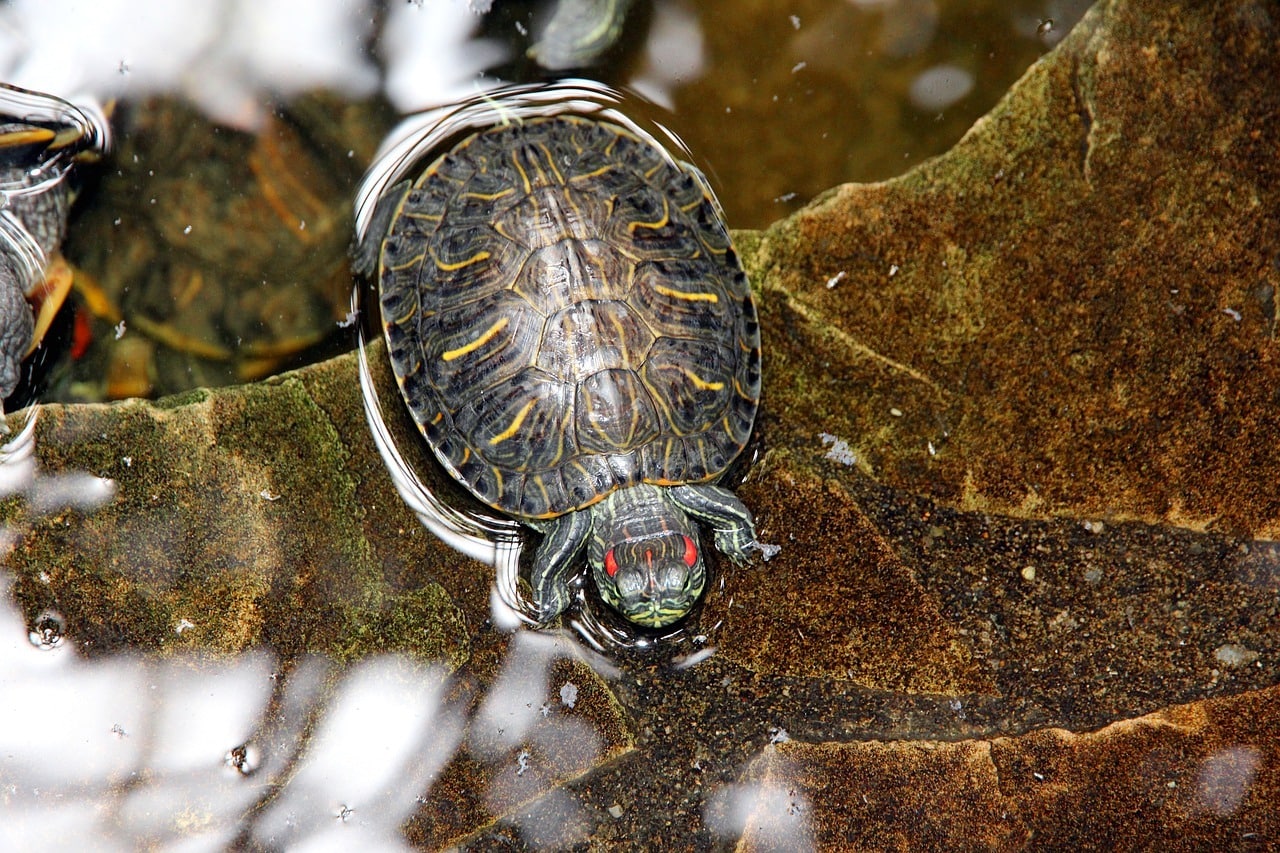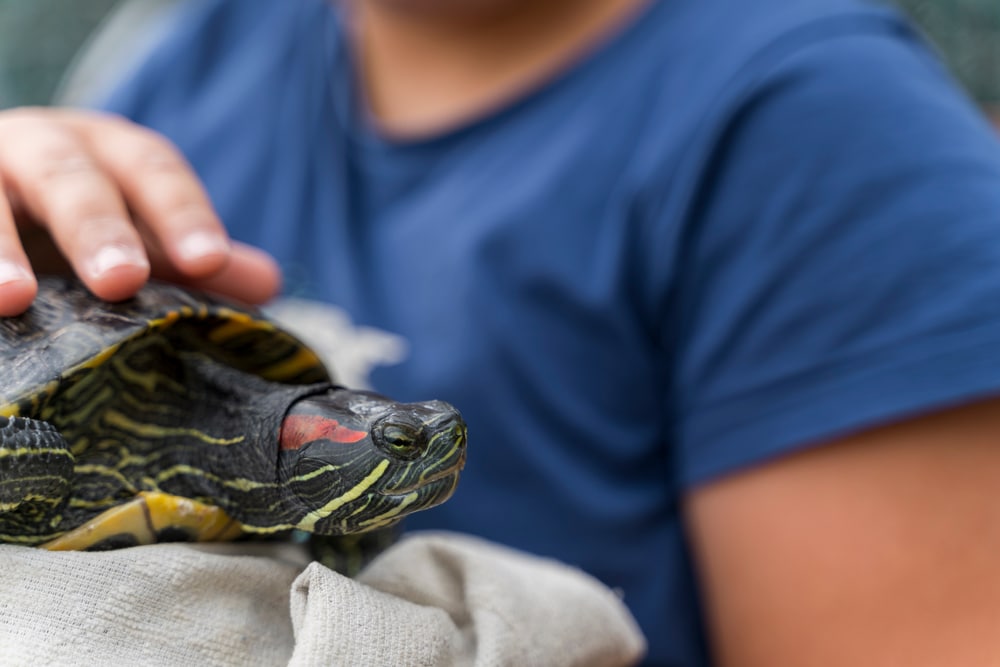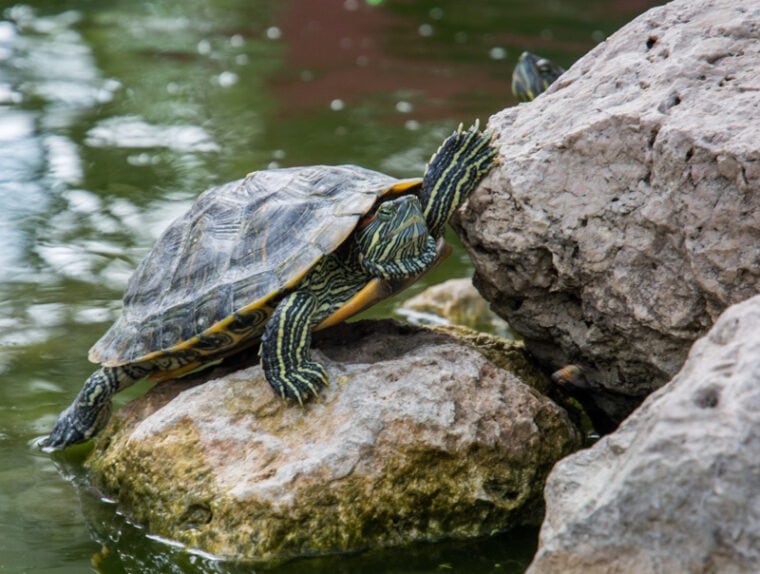
Click to Skip Ahead
When we think of a turtle, we often think about them tucking themselves away in a shell for protection. They move very slowly and don’t seem like athletic reptiles. But can turtles climb? And if so, how well?
Ultimately, the answer depends on what turtle we’re talking about. Some were blessed with the ability to climb, while others preferred to stay ground level. In this article, we will determine what species can climb and how well they can do it.
Some Turtles Can Climb
Certain breeds of turtles are ground dwellers. They don’t climb up surfaces, even if they can trudge up slight inclines. However, other turtles are actually quite skillful at climbing.
But how do they do this with their heavy shells and rigid bodies? Turtles are actually incredibly strong, maybe more so than we give them credit for. If you have a pet turtle and you’ve noticed that they tried to climb out of their enclosure more onto certain objects in your home, there’s likely a reason.
Turtles often climb when the habitat is not suitable. Others might do so for the adventure alone. We will look into the differences between certain shelled reptiles and their climbing skills.

Turtles, Terrapins, and Tortoises
You might hear terms getting thrown around a lot, and you’re not quite sure which is which. What is the difference between a turtle, terrapin, and tortoise?
Turtle
A turtle is a blanket term for shelled reptiles, including 14 families of over 200 subspecies. They are in the order of reptiles known as Testudines, with the characterization of an extraordinary shell that develops over their body to protect their sensitive organs.
They are generally divided up into tortoises and freshwater terrapins. Many of them are generally omnivorous, feeding on plants and animals to survive. Interestingly, the leatherback turtle is the 4th largest reptile in the world.
The turtle is made up of soft tissue on the legs and head. Two layers of shell cover its middle. The top layer is known as the carapace, and the bottom layer is known as the plastron. Together, these shell portions incase the turtle’s sensitive organs and protect them from danger.
Turtles can also be incredibly small. The smallest living turtle is the Speckled Dwarf Tortoise (Chersobius signatus) originating in South Africa. These turtles get to be no larger than 10 centimeters, or 3.9 inches, in length.
As you can see, there are plenty of varieties of these interesting creatures, but they all have one thing in common—their durable, intricate shells.
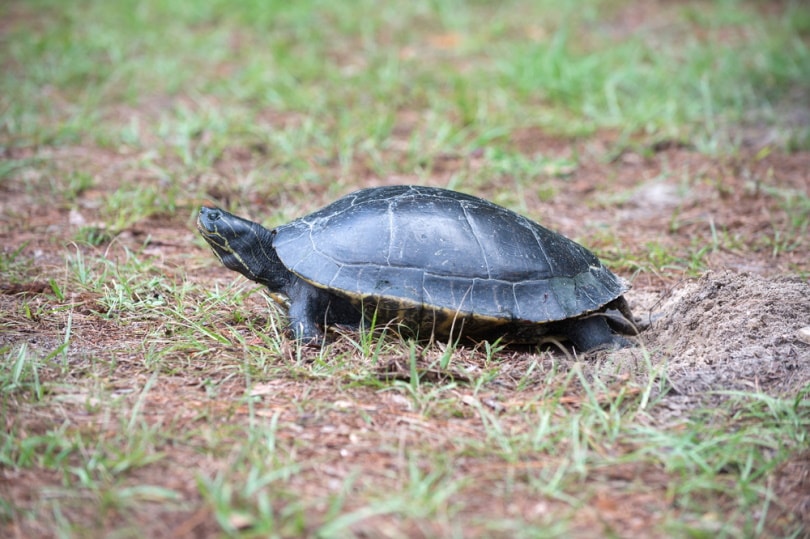
Terrapins
Terrapins are one of several species of turtle that can live in brackish freshwater or on land. (depending on type). Many terrapins that live in freshwater have flatter shells than land turtles, with some pretty interesting markings.
On the other hand, terrapins like box turtles reside mostly on land, although they do like sticking by a freshwater source. Most of them spend their time in moist soils.
Some examples of terrapins include:

Tortoise
All tortoises are turtles, but not all turtles are tortoises. A tortoise falls into the category of turtle as a classification. Unlike terrapins, tortoises live entirely on land.
While some tortoises are omnivorous, eating snails, worms, and other insects, they are mainly herbivores. You might think of a tortoise as a very large type of turtle, but some are quite small.
Some examples of tortoises include:

Certain Species of Turtle Can Climb Trees
Some species of turtle can absolutely climb trees and certainly will. They can climb for all sorts of reasons. For example, if they’re out of water and need to escape their immediate surroundings, they can climb several feet off of ground level.
It isn’t unusual to see a Snapping Turtle or a Box Turtle scaling a fence, for example. Even though it might seem a little off, it’s perfectly within their realm of expertise. Most climb out of necessity, but others will do so just to get a barrier out of their way.
If something stands between them and a destination, they can use their sharp claws and muscle strength to get them where they’re going.
Why Turtles Climb Trees
You might think it’s odd or peculiar that a turtle can climb. What are some reasons they might do so? The reasons can really vary depending on whether the turtle is in captivity or in the wild.
Escape from Predators
They might be trying to evade something that plans to eat them. Even though tucking up in their shell is a good method to prevent being eaten, so is escaping your predator entirely. If they sense dangers on the horizon, they might climb up a tree or another surface to stay out of sight.

Search for Food
You can find lots of yummy bugs up high too! If a turtle is having trouble finding food on the ground, they might try to elevate themselves to see what snacks they can dredge up.
Stress Response
If there’s something on the ground they find pretty scary, they might be trying to get to safety. If they don’t feel like the ground is safe, a tree or another high-up surface might be a better bet.
Temperature Regulation
Turtles have to maintain their body temperature since they are cold-blooded. If the turtle is too cold or warm, they might try to switch their position to a more comfortable location.
Basking
If your turtle sees a good spot that looks like it would be prime for basking, they might try to reach it. Turtles love laying out in the sun to soak up the vitamin D, creating the calcium needed in their bodies for strong shells and bones.
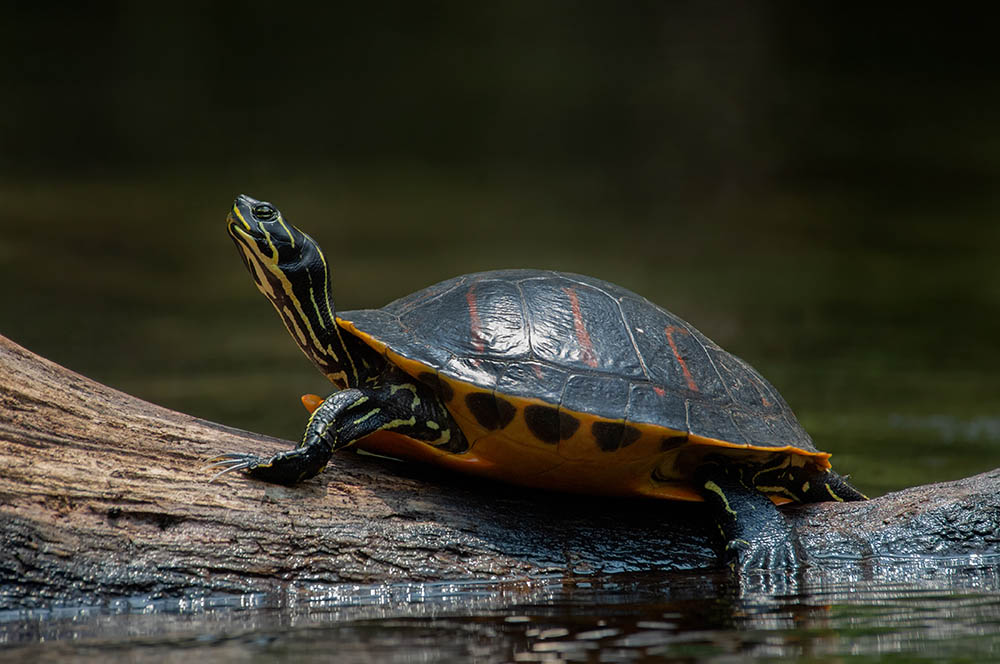
Dirty Water
A turtle can often climb to escape if it has unsanitary living conditions. They will venture to find another more suitable space to inhabit. If they are in captivity, this might be a sign your turtle’s water is full of nitrates and requires a full renewal.
Territory Expansion
A turtle might get crowded in their current living space and utilize climbing to locate new territory.
Can Climbing Lead to Shell Injury?
If a turtle has any kind of significant fall, it can always lead to shell damage. Even though turtles have incredibly strong shells, they aren’t bulletproof. If a turtle takes a tumble, it should be just fine, but in rare cases, the shell can fracture or crack.
A cracked shell can lead to a whirlwind of problems, as it allows bacteria into vulnerable parts of the turtle’s body. Infection can spread quickly, becoming increasingly problematic. In the wild, this can lead to death. In captivity, it will require veterinary-prescribed antibiotics.

Conclusion
To your surprise, you now have learned that turtles can and will climb if needed. Some do so for survival, adventure, escape, and various other reasons. While they have heavy bodies and could have some trouble lifting their bodies, their strong muscles can make it happen.
If your turtle keeps trying to escape its enclosure by climbing, check the environment to ensure it is suitable. Create more space, clean the water, or allow them more free time out of the enclosure to roam—depending on the problem.
- Related Read: Why Does My Turtle Stare at Me? 5 Likely Reasons
Featured Image Credit: Piqsels



